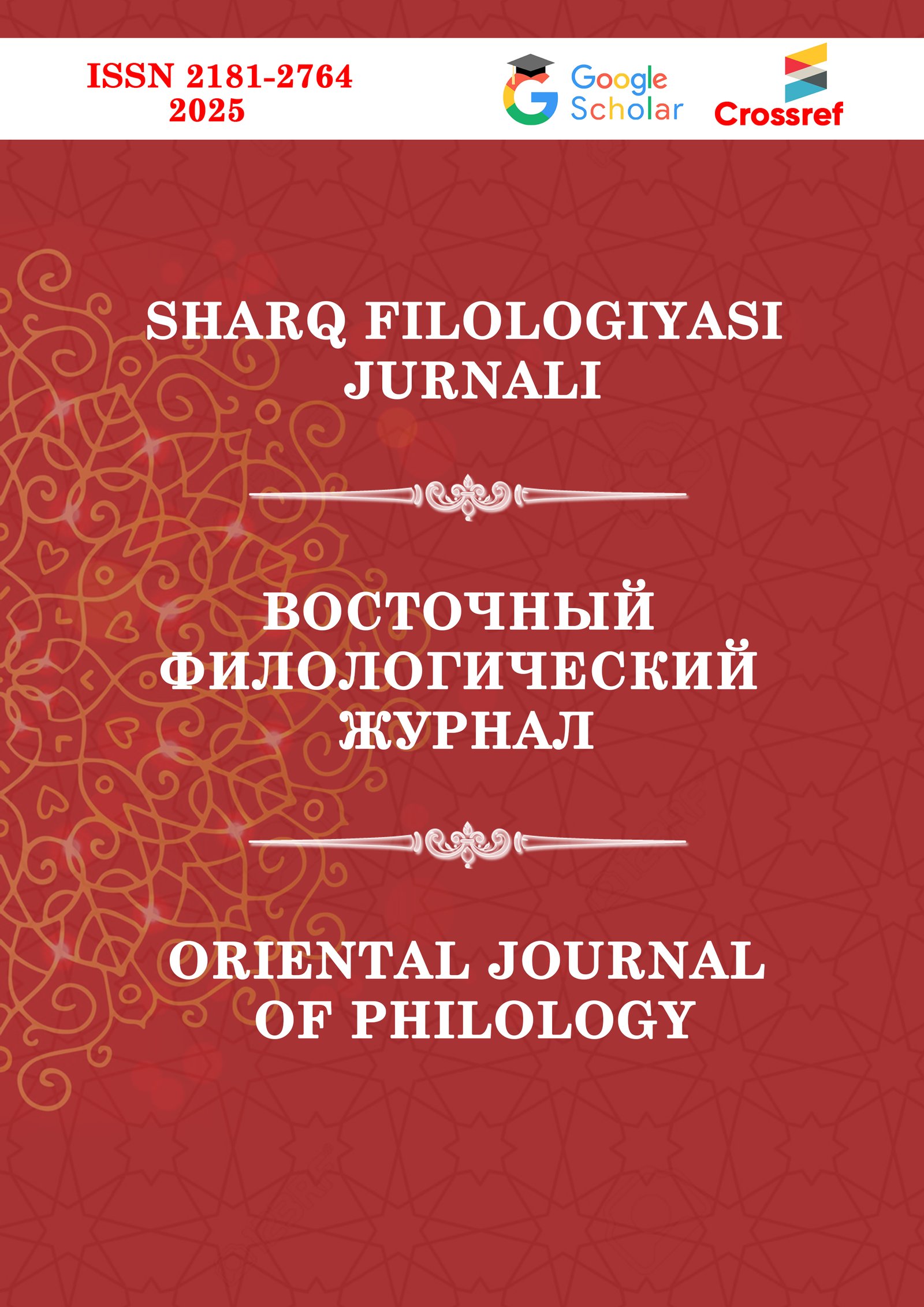 Articles
| Open Access |
DOI:
https://doi.org/10.37547/supsci-ojp-05-03-95
Articles
| Open Access |
DOI:
https://doi.org/10.37547/supsci-ojp-05-03-95
ARABIC KUNYAS MENTIONED IN ALISHER NAVOI’S WORK “MAJOLISU-N-NAFOIS”
Shafoat S. Hasanova , Sijoat A. Sharipova ,Abstract
This article analyzes Arabic kunyas in Alisher Navoi’s Majolisu-n-nafois, highlighting their linguistic, social, and literary significance. It explores how Navoi skillfully used and expanded their meanings, solidifying their role in Uzbek literature.
Keywords
Arabic kunyahs, lexical analysis, Alisher Navoi, Majolisu-n-nafois, Arabic culture, semantic functions.
References
Al-Bukhari, M. (2001). Sahih al-Bukhari. Sahih al-Buxoriy. – Riyadh: Darussalam. Vols. 1–9. (in Arabic)
Al-Jurjani, A. (1992). Kitab al-Ta’rifat. – Cairo: Dar al-Kutub al-Misriyya. 310 p. (in Arabic)
Anvarov, O. (2011). Alisher Navoi and Arab Culture. Alisher Navoiy va arab madaniyati. – Tashkent: Fan. (in Uzbek)
Navoi, A. (1997). A perfect collection of works. 20 volumes. Volume 13. Majolis un -nafois. Mukammal asarlar to’plami. Majolisu-n-nafois. 20 jildlik. 13-jild. - Tashkent: Fan. 300 p. (in Uzbek)
Article Statistics
Downloads
Copyright License
Copyright (c) 2025 Shafoat S. Hasanova, Sijoat A. Sharipova

This work is licensed under a Creative Commons Attribution 4.0 International License.

